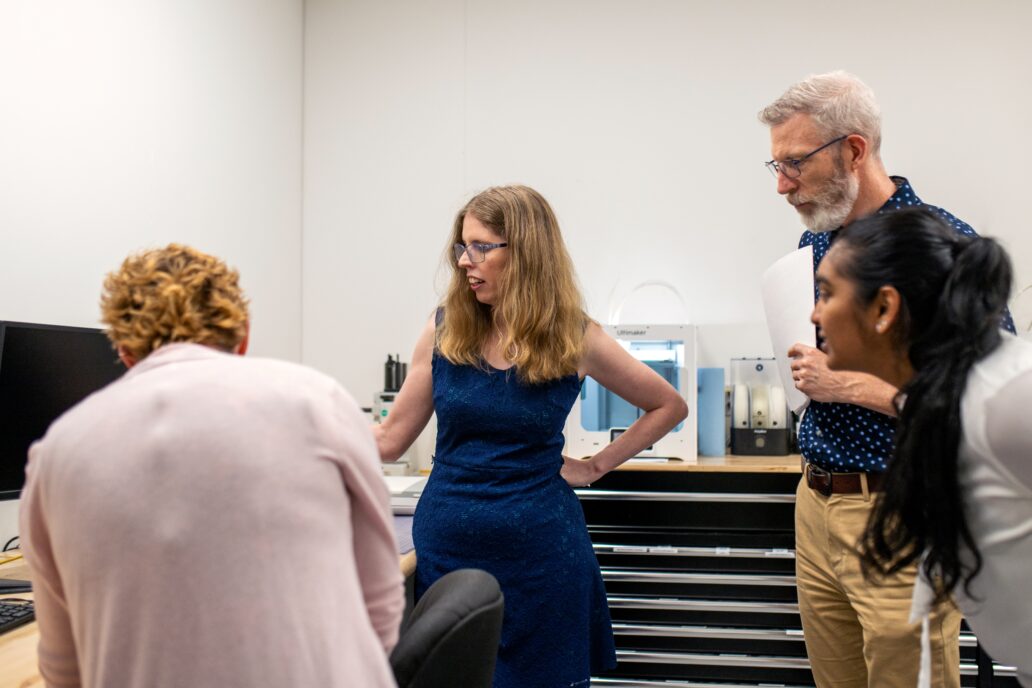
Inspiring Inclusion – Women in STEM
This year’s International Women’s day theme is ‘Inspire Inclusion’. In this blog I’ll share statistics around women in Science, Technology, Engineering and Mathematics (STEM) and the inspiration I’ve gained from inclusion improvements during my career.
I was brought up as a daughter of an engineer, often taken into work when school was out. So, from an early age I got to see what an engineer did. This combined with an interest and competency in math and science lead me to choose engineering as my degree subject. During the 90s in high school in the United Kingdom, I started to see a real upswing in encouraging girls into STEM subjects.
Visiting a university for a week was a great opportunity for me; I participated in engineering challenges, experienced what it was like to stay in a dorm, and visited local engineering companies. As part of this trip, I visited the UK’s Royal Mint which was quite an eye-opening experience. Seeing women in STEM opportunities during high school really cemented that STEM was a career I wanted to pursue.
At university, students took a general-based engineering course for the first two years which included everything from civil engineering to analogue electronics. and then specialized in different areas depending on their interests. I picked mechanical engineering for my third year and then aeronautics in my final year.
My first-year cohort was 126 students of which were 15 girls, an 11% ratio. I lived in an all-female dorm and got to meet many others studying different subjects. Within STEM, the most common areas of study were chemistry and biology, with fewer in math and physics. Most of my friends in the dorm were actually studying linguistics and teaching.
A study by Yale university[1] published in 2020 shows they were seeing up to 40% of STEM bachelor’s degrees being awarded to women. Another study from 2017[2]puts the rate at around 26%-35%. A similar study in Canada by Statistics Canada[3] from 2016, puts the figure at 34%. Whilst this is still under representative compared to the number of male graduates, it inspires me to know that more women are choosing to study STEM subjects and complete their degree studies. All are great improvements from when I was at university.
Once I completed my degree and emerged into the world of work, it took a while to find my feet. First, trying out my engineering skills, then choosing to move into Project Management, and eventually joining Quality and Regulatory. I’ve worked at a number of different companies, two were design consultancies similar to StarFish Medical.
During the 00’s and 10’s I would see women in about 10-13% of STEM roles (engineering, human factors, quality & regulatory, and manufacturing). The Statistics Canada study mentioned above also looked at how those degree rates translated into employment rates, and concluded that 23% of science and technology workers among Canadians aged 25 to 64 were women in 2016.
I look around me now at StarFish and am inspired by all the women in STEM I work with. I am proud to work with 61 other women, 38 of whom work in those STEM roles, representing a 28% ratio. The thing which inspires me most of all is the fact that the senior management team within StarFish consists of 55% women. As a newer member of the senior management team, I have been truly welcomed and I hope to inspire the next generation of inclusive leaders as part of this team.
We also see a strong presence of women in other teams including QA/RA (77%), project management (40%), systems engineering (37%), human factors (37%), bio services (28%), supply chain (27%), manufacturing (25%), and new product introduction (25%).
We work hard to encourage diverse hiring at StarFish and support local universities and their co-op programs, engaging with the upcoming cohorts of engineers to translate their STEM degrees into STEM careers. It would be great to see women in STEM ratios rise even higher, so if you are looking for a career in STEM check out our careers page.
[1] By the Numbers: Women in STEM: What do the statistics reveal about ongoing gender disparities? – Yale Scientific Magazine
[2] Women in STEM Statistics – Stem Women
[3] Persistence and representation of women in STEM programs (statcan.gc.ca)
Image: StarFish Medical
Helen Simons is a Director of QA/RA at StarFish Medical. Helen’s education is in Mechanical engineering, with a background of product development and QMS development across multiple industries with consumer and industrial products to medical devices, IVD and combination devices.